
Sheila Hicks is an American artist. She is known for her innovative and experimental weavings and sculptural textile art that incorporate distinctive colors, natural materials, and personal narratives.
Tara Donovan is an American sculptor who lives and works in Brooklyn, New York. Her large-scale installations, sculptures, drawings, and prints utilize everyday objects to explore the transformative effects of accumulation and aggregation. Known for her commitment to process, she has earned acclaim for her ability to exploit the inherent physical characteristics of an object in order to transform it into works that generate unique perceptual phenomena and atmospheric effects. Her work has been conceptually linked to an art historical lineage that includes Postminimalism and Process artists such as Eva Hesse, Jackie Winsor, Richard Serra, and Robert Morris, along with Light and Space artists such as Mary Corse, Helen Pashgian, Robert Irwin, and James Turrell.
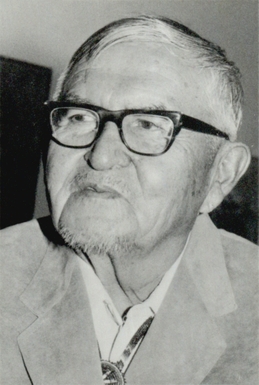
Allan Capron Houser or Haozous was a Chiricahua Apache sculptor, painter, and book illustrator born in Oklahoma. He was one of the most renowned Native American painters and Modernist sculptors of the 20th century.
Ann Hamilton is an American visual artist who emerged in the early 1980s known for her large-scale multimedia installations. After receiving her BFA in textile design from the University of Kansas in 1979, she lived in Banff, Alberta, and Montreal, Quebec, Canada before deciding to pursue an MFA in sculpture at Yale in 1983. From 1985 to 1991, she taught on the faculty of the University of California at Santa Barbara. Since 2001, Hamilton has served on the faculty of the Department of Art at the Ohio State University. She was appointed a Distinguished University Professor in 2011.

Teresita Fernández is a New York-based visual artist best known for her public sculptures and unconventional use of materials. Her work is characterized by a reconsideration of landscape and issues of visibility. Fernández’s practice generates psychological topographies that prompt the subjective reshaping of spatial and historical awareness. Her experiential, large-scale works are often inspired by natural landscapes, investigating the historical, geological, and anthropological realms in flux. Her sculptures present optical illusions and evoke natural phenomena, land formations, and water.
Chakaia Booker is an American sculptor known for creating monumental, abstract works for both the gallery and outdoor public spaces. Booker’s works are contained in more than 40 public collections and have been exhibited across the United States, Europe, Africa, and Asia. Booker was included in the 2000 Whitney Biennial, received a Guggenheim Fellowship in 2005, and an American Academy of Arts and Letters Award for Art in 2001. Booker has lived and worked in New York City’s East Village since the early 1980s and maintains a production studio in Allentown, Pennsylvania.

Nnenna Okore is an Australian-born Nigerian artist who lives and works in Chicago at North Park University, Chicago. Her largely abstract sculptural forms are inspired by richly textured forms and colours within the natural environment. Okore's work frequently uses flotsam or discarded objects to create intricate sculptures and installations through repetitive and labor-intensive processes. She learnt some of her intricate methods, including weaving, sewing, rolling, twisting and dyeing, by watching local Nigerians perform daily domestic tasks. In her more recent works, Okore uses plant-based materials to create large bioplastic art forms and installations. Her work has been shown in galleries and museums within and outside of the United States. She has won several international awards, including a Fulbright Scholar Award in 2012. and the Australian Creative Victoria Award in 2021.
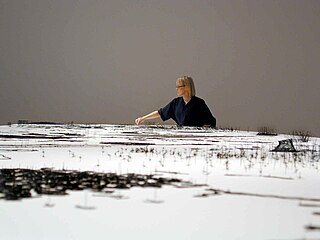
Anne Wilson is a Chicago-based visual artist. Wilson creates sculpture, drawings, Internet projects, photography, performance, and DVD stop motion animations employing table linens, bed sheets, human hair, lace, thread and wire. Her work extends the traditional processes of fiber art to other media. Wilson is a professor in the Department of Fiber and Material Studies at The School of the Art Institute of Chicago.

Claes Oldenburg was a Swedish-born American sculptor best known for his public art installations, typically featuring large replicas of everyday objects. Another theme in his work is soft sculpture versions of everyday objects. Many of his works were made in collaboration with his wife, Coosje van Bruggen, who died in 2009; they had been married for 32 years. Oldenburg lived and worked in New York City.
Jean Shin is an American artist living in Brooklyn, NY. She is known for creating elaborate sculptures and site-specific installations using accumulated cast-off materials.

Jessica Stockholder is a Canadian-American artist known for site-specific installation works and sculptures that are often described as "paintings in space." She came to prominence in the early 1990s with monumental works that challenged boundaries between artwork and display environment as well as between pictorial and physical experience. Her art often presents a "barrage" of bold colors, textures and everyday objects, incorporating floors, walls and ceilings and sometimes spilling out of exhibition sites. Critics suggest that her work is informed by diverse artistic traditions, including abstract expressionism, color field painting, minimalism and Pop art. Since her early career, they have noted in her work an openness to spontaneity, accident and marginality and a rejection of permanency, monetization and disciplinary conventions that Stephen Westfall characterized as an "almost shocking sense of freedom."

Alyson Shotz is an American sculptor based in Brooklyn, New York. She is known for experiential, large-scale abstract sculptures and installations inspired by nature and scientific concepts, which manipulate light, shadow, space and gravity in order to investigate and complicate perception. Writers suggest her work challenges tenets of monumental, minimalist sculpture—traditionally welded, solid, heavy and static—through its accumulation of common materials in constructions that are often flexible, translucent, reflective, seemingly weightless, and responsive to changing conditions and basic forces. Sculpture critic Lilly Wei wrote, "In Shotz’s realizations, the definition of sculpture becomes increasingly expansive—each project, often in series, testing another proposition, another possibility, another permutation, while ignoring conventional boundaries."
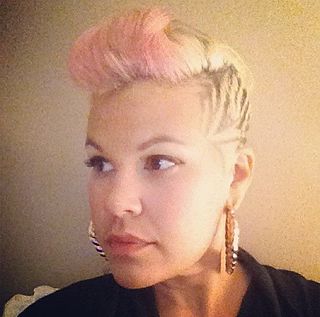
Heather T. Hart is an American visual artist who works in a variety of media including interactive and participatory Installation art, drawing, collage, and painting. She is a co-founder of the Black Lunch Table Project, which includes a Wikipedia initiative focused on addressing diversity representation in the arts on Wikipedia.
Nancy Rubins is an American sculptor and installation artist. Her sculptural works are primarily composed of blooming arrangements of large rigid objects such as televisions, small appliances, camping and construction trailers, hot water heaters, mattresses, airplane parts, rowboats, kayaks, canoes, surfboards, and other objects. Works such as Big Edge at CityCenter in Las Vegas contain over 200 boat vessels. Stainless Steel, Aluminum, Monochrome I, Built to Live Anywhere, at Home Here, at the Albright-Knox Art Gallery in Buffalo, contains 66 used aluminum boats and rises to a height of 30 ft.
Rona Pondick is an American sculptor. She lives and works in New York City. Using the language of the body in her sculpture, in both a literal and a metaphorical sense, has been of interest to Pondick since the beginnings of her career in 1977. An abiding concern of hers has been the exploration of the use of different materials, a consistent motif that runs throughout her work from its beginnings to the present day.

Julianne Swartz is a New York-based artist. She is known for immersive installations, architectural interventions and sculptures that bring sound, optics and kinetics into play to create alternative, multisensory experiences. She uses utilitarian materials to warp, reshape or deepen perception, generating unexpected, ephemeral and participatory experiences out of common situations. Critics suggest that her work inhabits liminal areas, both literally and conceptually, bridging the perceptible and evanescent, public and private, visual and embodied, affective and technical. Art in America critic Peter R. Kalb wrote, "Swartz appeals to the senses and emotions with a quiet lyricism, using unassuming materials and marshaling grand forces like wind and magnetism" to offer "a thoughtful excursion into sound, sight and psyche."
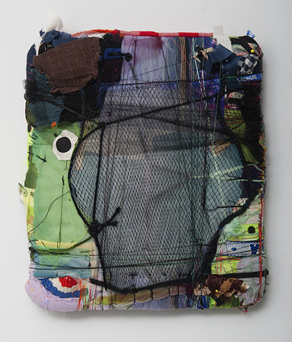
Julia Couzens is a California-based, American artist known for a diverse body of work that embraces unconventional materials and methods and includes drawing, sculpture, installation art, and writing. Critic David Roth identifies as a connecting thread in her evolving work, her "decidedly surrealist-symbolist sensibility, in which eroticism, the grotesque and the gothic mix in equal parts." Her work has been shown internationally and throughout the United States, including solo exhibitions at the Christopher Grimes Gallery and California State University, Stanislaus (2009), in surveys at the University of California, Davis and Sonoma Museum of Visual Art (1999), and group shows at the Crocker Art Museum, P•P•O•W, Orange County Museum of Art, Hammer Museum, and BAMPFA, among others. Her art has been reviewed in the Los Angeles Times, San Francisco Chronicle, Flash Art, New Art Examiner, and Art Practical, among other publications, and collected by institutions including the Crocker Art Museum, Fine Arts Museums of San Francisco, Oakland Museum of California and Butler Institute of American Art, among many. In addition to working as an artist, Couzens has taught at several Southern California universities and writes about contemporary art for The Sacramento Bee and Squarecylinder. She lives and works on Merritt Island in the Sacramento River delta community of Clarksburg and maintains a studio in downtown Los Angeles.

Lisa C Soto is a visual artist based in Los Angeles, California. The themes of her work are informed by both "her Caribbean heritage and her continuous movements between continents and islands." Soto's drawings, installations and sculptures embody the struggle between connections and disconnections. Supporting the belief that all things, seen and unseen are essentially linked. There is a conversation that includes a personal and a universal situation, an interplay between the micro and the macro. Questioning the endless conflicts, the creation of artificial differences, and the establishment of borders. While exploring the essence of the forces at work in the macrocosm. Shaping what those energies, frequencies, and vibrations might look like.
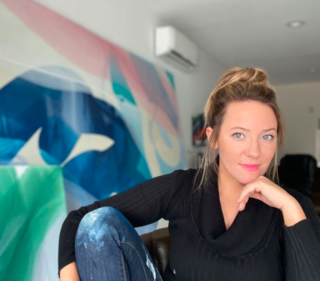
Marina Savashynskaya Dunbar is a Belarusian artist and entrepreneur. She is known for her modern, abstract paintings. Her artwork has been featured in museums and galleries throughout the United States as well as national and international private and public collections. She studied business and fine art in college and she is currently based in Charleston, South Carolina.

Heide Fasnacht is a New York City-based artist who works in sculpture, drawing, painting and installation art. Her work explores states of flux, instability and transformation caused by human action and natural events. Since the mid-1990s, she has been known for sculptures and drawings that recreate momentary phenomena such as sneezes, geysers and demolitions—in sometimes abstract or cartoony form—that are temporally and spatially "frozen" for consideration of their aesthetic, perceptual, social or sensate qualities. In the late 2010s, she has expanded these themes in paintings that examine lost and neglected childhood sites, such as playgrounds and amusement parks. ARTnews critic Ken Shulman has described her work as "chart[ing] the fluid dialogue between second and third dimensions, motion and inertia, creation and ruin."

















